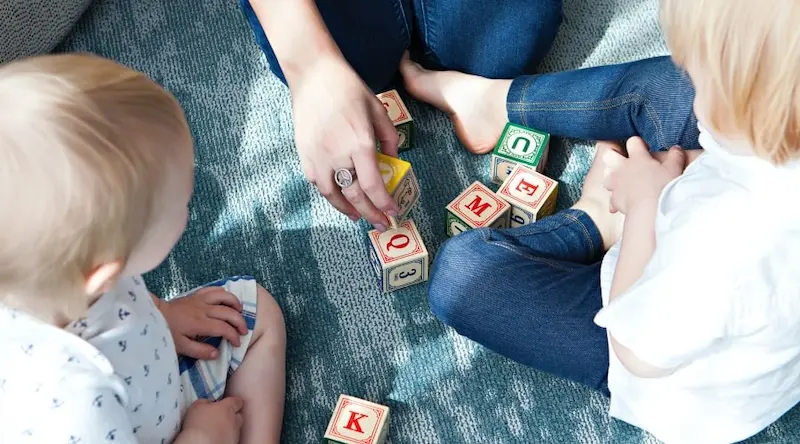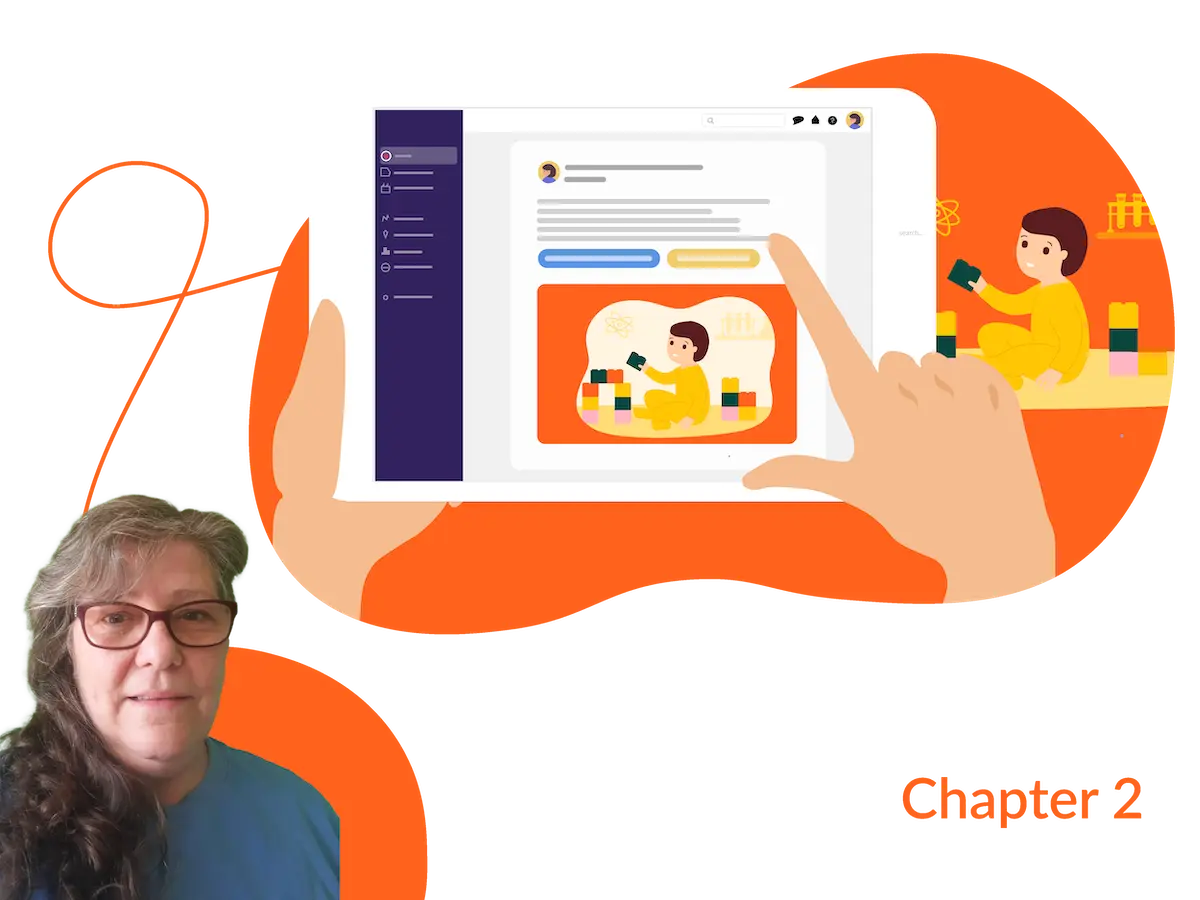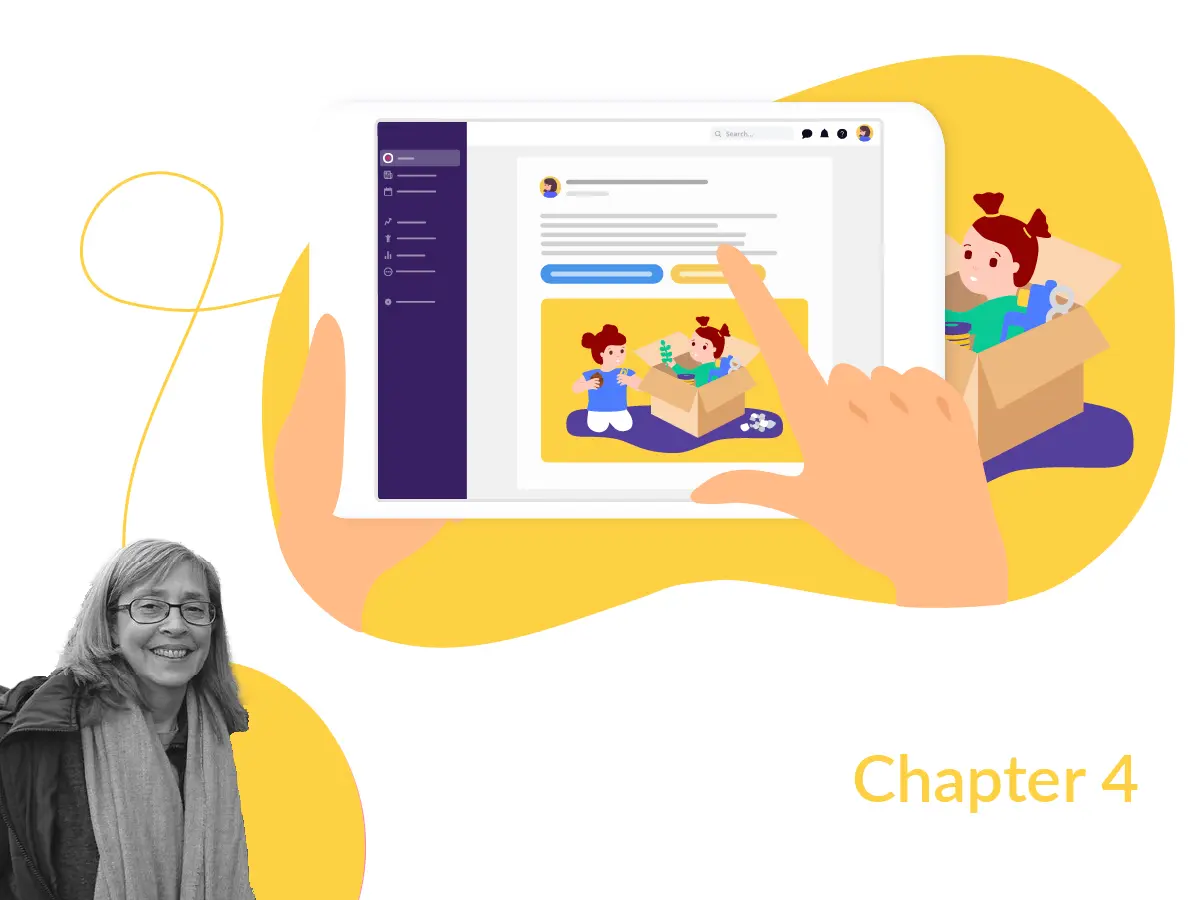settings
children
With Famly since
Over at Twinnie Day Nursery in Greenwich, Ruth Hearn sees the new EYFS as a dream come true.
“I’m actually delighted — I love the changes,” she says. “I’m a bit old school, and this is taking me back to how I was trained. That was before the fixation on all sorts of paperwork and tracking, in the way it turned into.”
Ruth has been working in the Early Years for the better part of three decades. And in that time, she’s seen the paper trail attached to observations and tracking grow longer and longer. So as the new EYFS 2021 framework shifts the spotlight from tick-lists to toddlers, Ruth and her team at Twinnie are looking at the tweaks and changes they’ll make to follow suit.
Today, we’ll hear from Ruth about how the new EYFS policy affects her day-to-day practice, and how that practice meets the new features on Famly’s platform.
The big ideas
The Twinnie team’s top 5 tips to take on the new EYFS
- Some of the best observations come from gut feelings.
Once you record that ‘wow moment’, you can use Famly’s reference materials to add on child development knowledge after the fact. - Not every observation needs a next step.
The new “What’s next?” function is great for jotting down notes or planning future activities. But sometimes, it’s enough to observe in the moment. - While Ruth always welcomes parent engagement, she doesn’t stress if some parents are less active.
It’s alright to give parents space to use Famly however suits them best. - Assessments are reference tools for practitioners, not alert systems for children needing support.
If you’re present with children, you’ll notice those needs long before you generate a progress report. - When sharing updates with parents, Ruth focuses on those ‘wow moments’.
She believes too much child development nitty-gritty makes parents fixate on progress reports, rather than savour those un-quantifiable moments of joy and discovery.

For observations, it’s time to take notes from the old school
- With the new EYFS, observations are back to what they used to be: a reference tool for practitioners, not data points for Ofsted.
- Ruth feels some of the best observations come from what she calls ‘Wow moments’. “If it stirs a feeling, it’s worth recording,” she says.
- Famly’s new format supports this approach: You can record those ‘Wow moments’ as they happen, then use the reference materials in case you need to take a deeper look into why you’re seeing something.

So what’s the purpose of observations in 2021?
Ruth believes that with the new EYFS, observations are getting back to what they ought to be: A tool for practitioners to understand and support their children better, and to reflect upon and improve their own practice.
When you hit ‘Observation’ in your Famly app now, you’ll notice that we’ve removed the option to link the observation to a specific statement within Development Matters. But a blank text box can be intimidating. Without those statements to link to, what makes for a good, open-ended observation?
As Ruth says, some of the best observations come from the gut. They’re what she calls ‘Wow moments.’
“It might be something a child did for the first time by themselves, like mastering a skill. It’s the lightbulb moments, where you see the excitement and happiness in a child’s expression. If it stirs a feeling, it’s worth recording,” she says.
Instead of hunting for some moment that matches a tick-list, you can let emotion lead. Then, you can use the Birth to Five Matters and Development Matters reference materials in the sidebar to explore the layers of child development knowledge as you enter your observations.
When bringing in apprentices and trainees, Ruth recommends bringing in some of Ofsted’s terminology into observations. In particular, she encourages newer practitioners to use Ofsted’s 3 I’s when making observations, to understand all the moving parts of child development.
“It not only describes the whole scenario, but it dissects it as well, so practitioners are actually realising what they’re doing for children,” she says.
How should we use assessments and progress tracking in the new EYFS?
- With the new EYFS, assessments and progress tracking are all about knowing when and how to adjust your practice and provision.
- In Famly, you can now configure your assessments and progress reports to use the terminology and layout that you think best fits your own pedagogy.
- Ruth says assessments are reference tools for practitioners, not alert systems for children needing support. Those needs should be clear long before you generate a progress report.
Let’s look at the bigger picture, with assessments and long-term progress reports. If they’re not for Ofsted anymore, who are they for?
In short, they’re for you.
With the new Famly platform, we’ve given you lots of options to configure how your setting’s assessments look. You can toggle age bands on and off, write your own assessment options for a child’s progress, and even change the colours denoting where a child’s at on your chart.
At Twinnie, assessments aren’t so much to focus on children’s growth, but to help practitioners spot places where they might adjust their practice and provision. Assessments and age bands can give a warning if children need extra support.
But, Ruth says, if you’ve got a confident grip on child development and you’re present with your children, that assessment report shouldn’t be your first indicator of that.
“At the end of the day, if you have concerns about a child's development levels, you should be having conversations with parents, to find out what you can do to help,” she says. “It’s our job to pick up on children falling behind, or push those who are excelling, and to adapt our practice accordingly.”

What’s next for Next Steps?
- The ‘Next Steps’ section in Famly’s Observation creator has become ‘What’s Next’, and it’s no longer so prominent when you start a new observation.
- Good observations don’t always need a “What’s Next.” Sometimes, it can just turn into extra paperwork.
- While the Twinnie team doesn’t use “What’s Next” much, it’s still a great tool for adding some notes, activity ideas or extra details to your observation, if you feel you need it.
In the new Famly platform, you’ll notice that the ‘Next Steps’ text box in each observation has been renamed ‘What’s Next?’ And now, you’ve got to specifically choose to open up that section and start writing.
Our intent with this is to deemphasise the section a little bit. Good observations don’t always need a ‘What’s Next?’ attached — and we’d like to shift the focus on what practitioners can do next to best support children, rather than pushing children to hit that next step.
For Ruth, this change is a good fit for her own philosophy and practice.
“I’ve always found next steps a bit restrictive. They can make practitioners feel pressured to work on that ‘next step’ week in, week out until the child gets it, when that’s just not how children work.”
But of course, there’s more than one way to use Famly. You can use ‘What’s Next’ as often or as little as you like, to fit best with your own curriculum and philosophy.
“For practitioners who might need to focus on where they need to go to support a specific child, I could see them using the “What’s Next” function to annotate some notes, brainstorm some activities they might like to try, or jot down some details to look out for,” Ruth says.
Parent engagement: Doing what fits each family
- Through Famly, Ruth and her team share activities, challenges, and top tips through the News Feed to help connect with parents, and boost child development at home.
- However, she’s not too worried if parents don’t post all the time — after all, everybody’s got a busy life at home, too.
- Parent engagement is always welcome, but Ruth doesn’t pressure families to constantly share updates. She and her team focus on learning a child’s home life through the interactions at their physical setting.
Amidst the big changes in Famly and the EYFS, one thing remains the same: Connecting with parents through Famly is still front and centre.
Ruth says every family at her setting engages with her through Famly in one way or another — whether that’s sending messages throughout the day, or sharing a picture from a weekend walk to the park. At Twinnie, Ruth and her team use Famly’s News Feed function to share activities that parents can try at home, or little tips and tricks to help boost developmental skills.
For Ruth, getting parents engaged in using Famly is always nice, and always welcome. But she also realises that parents have plenty of other things going on at home, too.
“Some parents are good at sharing things, while others just don’t. Might not know what they’re doing, might forget, or they just don’t see it as necessary. Everybody’s different, everybody’s busy,” she says.
Getting updates from parents is always welcome — it’s nice to see what children get up to outside the setting, or on the weekends. But largely, Ruth expects practitioners to take the initiative here.
“Parent engagement isn’t the be all and end all for us. At the end of the day, I feel it’s us practitioners who need to take the initiative for reaching out, to form a full picture of children and help them progress.”

How much progress tracking do we share with parents?
- When sharing updates with parents, Ruth focuses on those ‘Wow moments’ — not the fine print of child development, nor progress tracking.
- She and her team feel that too many developmental updates can lead parents to hyperfixate on their child’s growth, and worry needlessly about whether they’re falling behind.
- If parents do ask, Ruth and her team make the time to talk. But usually, she’s found parents are perfectly happy to simply see their children learning, growing and trying new things.
At Twinnie Day Nursery, Ruth and her team try not to overload parents with too many nitty-gritty child development details.
As she explains, she feels it can lead parents to fixate on the numbers and graphs charting their child’s progress, rather than savouring those unquantifiable moments of curiosity, joy and discovery. If parents do want to dive into the details, they can of course follow their child through the Learning Journey section on Famly, or make time to meet with Ruth or her practitioners for a chat.
But mostly, the Twinnie team focuses on updating parents through those ‘Wow moments’ — the pictures and videos of the brightest bits of the children’s days. That’s where the ‘Posts’ functionality on Famly’s News Feed shines.
“Each room at Twinnie shares posts to parents two to three times a week, mostly to show those happy moments in what’s happening every day,” Ruth says. “I’ve found that mostly, parents just want to see their child is happy, growing and learning new things.”
Top tips from Alphabet House
Get top tips from a setting just like yours. Hear from Alphabet House on why and how they use Famly - and why they’ve never looked back.
Read their story










